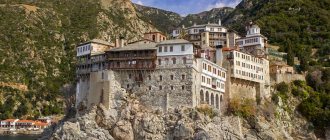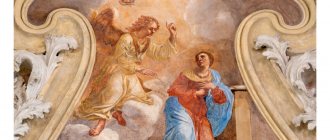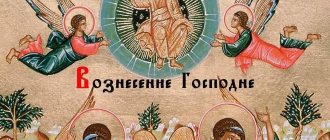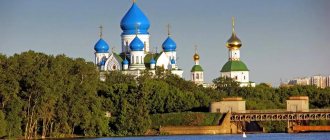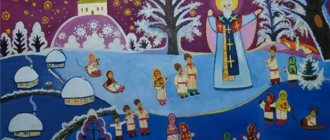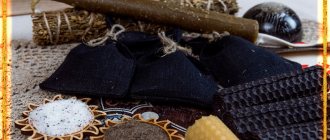| Celebration in honor of the Iveron Icon of the Mother of God in 2022: | February 25, Friday |
The Orthodox Church tradition is characterized by a large number of memorable days dedicated to miraculous icons. Usually these are images that depict the Mother of God with the baby Jesus in her arms. One of the most significant such days is February 25, when the celebration is celebrated in honor of the Iveron Icon of the Mother of God.
What date is the day of the Iveron Icon of the Mother of God celebrated?
The following dates are associated with this image:
- February 25 - according to the Gregorian calendar (or February 2 according to the Julian style). Then the copy of the Iveron Icon was transferred to the monastery located in the city of Valdai. This event took place in 1656.
- October 26 – according to the Gregorian calendar (or October 13 according to the Julian calendar). In Moscow, the copy of the Iveron Icon, which ruler Alexei Mikhailovich sent from the Holy Mount Athos, is solemnly greeted and transferred.
Therefore, believers celebrate the feast of the miraculous shrine several times a year, but the second date ( October 26 ) is considered more common.
Why was the miraculous icon of the Mother of God called the Gatekeeper?
According to legend, the monks repeatedly took the icon to the Iversky Monastery , but the next morning, by some miracle, it always appeared at its gates. The monastery servants again carried her indoors.
Then the Mother of God appeared to Gabriel the Holy Mountain in a dream and asked that the monks no longer transport her to the monastery, since She herself should become the guardian in subsequent periods. Since that time, the Iveron Icon of the Mother of God has remained on the gates of the monastery. For this reason she is called the Gatekeeper.
There are many known miracles associated with the Iveron Icon. So, when the famine period came, the provisions were replenished by themselves, and sick people recovered. Based on the chronicle of the monastery, the monastery was not seriously damaged during the enemy invasion.
Historical information about the discovery of the miraculous image
Find out what awaits you today - Horoscope for today for all zodiac signs
Due to numerous requests from subscribers, we have prepared an accurate horoscope application for mobile phones. Forecasts will arrive for your zodiac sign every morning - it's impossible to miss! Download for free: Daily Horoscope 2020 (available on Android)
The first written evidence about the icon that has survived to this day is Greek - dates back to the 16th century, and Slavic - to the 15th century AD. There is no single version about how the Iveron Icon of the Mother of God appeared - there are several assumptions on this matter, but they all contradict each other. Let's look further at the most popular version.
According to it, in the 9th century, the miraculous image, now known as the Iveron image, was carefully kept by one believing widow. The woman lived near the city of Nicaea. During the reign of Emperor Theophilus (from 829 to 842), mass destruction of Christian shrines was carried out. The iconoclasts also reached the home of the righteous widow. The soldiers discovered the icon, and one of them hit it with a spear, after which real blood began to ooze from the face of the Virgin Mary.
The widow was very afraid that the shrine would be destroyed, so she invited the emperor’s soldiers to take the money and allow them to keep the image until the next morning. They left, and the woman, together with her son (who would later become an Athonite monk), trying to save the image, betrayed it to the waves of the sea.
It is believed that two centuries later the icon miraculously floats to Mount Athos. Servants at the Georgian Iveron Monastery, which stands on the Holy Mountain, for several days could observe how a pillar of fire emerged from the water and stretched to the very sky. The monks decided to check what was there and went ashore. There they discovered the holy icon, which stood on the waves of the sea.
The monks performed a prayer service of thanks to the Lord for giving the monastery a shrine. After which, during a night's rest, the pious servant of the monastery, Gabriel the Svyatogorets, has a vision of the Mother of God. In it, Saint Mary commands to walk on the water, take the holy image and leave it in the monastery. The monk did what he was told. But then events began to unfold in an amazing way: the next day the monks discover the icon not in the temple, but above its gates.
This is repeated more than once and lasts until the Mother of God again reveals her desire to Gabriel in a dream. It consisted in the fact that the Virgin Mary did not want to be protected by the members of the monastery, but to protect them herself. Then the icon was placed above the monastery gates. This is where its other names came from - Portaitissa or Goalkeeper. The image was named Iversky from the name of its location - that is, the Iversky Monastery.
At first, the Goalkeeper was located outside, in a shrine not far from the entrance. Then a small temple was built for her inside the monastery, on the left side of the gate, where she remains until today. Versions about the date when the appearance of the holy icon occurred also differ - some call March 31, others April 27.
As for the Iversky Monastery itself, here the feast of the shrine of the same name is celebrated on Tuesday during Bright Week (that is, the week starting with Easter and lasting until the next Sunday). On the solemn day, the monks make a religious procession to the sea coast, where, according to legend, the icon was found by the monk Gabriel in time immemorial.
Why is the icon of the Mother of God called Iveron
There is one very exciting legend about this icon. In the 9th century, it was kept in the house of a pious widow who lived in the city of Nicaea. During the reign of Emperor Theophilus, the iconoclasts were especially active.
Once they entered the widow’s house and began to destroy sacred icons. The soldier tore the holy icon from the wall and began to trample on it with his feet, after which he pierced it with the tip of his spear. Suddenly, real blood emerged from the holy face. For some time the soldiers stood silently in amazement and confusion. The widow invited them to take their jewelry, just to save the holy face.
The soldiers, having taken the precious jewelry, left, but promised to return tomorrow to finish what they started. At dawn, the woman, accompanied by her son, took the icon to the sea, where it remained for 2 centuries.
In the 11th century, monks from the Iveron Monastery saw the holy face of the Mother of God on the water, supported by a pillar of fire.
Gabriel Svyatogorets managed to take the icon and move it to the monastery. So they began to call it Iverskaya.
Holiday traditions
Now let's talk in more detail about the traditions of this day. According to the popular calendar, October 26 is called Bannik or Bath Day. It has come down to us from the times when paganism was the main religion on Russian lands. Then, on the specified date, a traditional bath in the bathhouse should have been organized.
When going to take a steam bath, they were sure to stock up on infusions made from various herbs, which were believed to have healing powers and could even cure epilepsy. People believed that the bannik (that is, the spirit living in the bathhouse) expels their ailments from the sick. But to do this, you need to show respect to him - first of all, when entering the bathhouse, get rid of the cross on your body. And they didn’t forget to ask the bath attendant for permission to go take a steam bath and swim.
People tried to adhere to specific, strict rules, because they believed that if they broke them, they would bring upon themselves many troubles and misfortunes. For example, they didn’t go to the bathhouse at night, believing that then the bathhouse owner himself wanted to swim and they could stop him. The spirit was represented as an incorporeal creature, sometimes turning into a dog, cat, hare or frog. When leaving the bathhouse on October 26, he was left with water and a broom with soap overnight.
Under no circumstances were icons or other Christian attributes brought into the bathhouse. Otherwise, it was possible to anger the bannik, but he would already find a way to take revenge - for example, throw a stone at the offender. And the most useful time spent in the steam room was considered to be when it was the third, fourth or seventh steam.
Since pagan times, the custom of not being alone and in the dark on October 26 has been preserved: since ancient times, people tried to go for a walk on this day, lit fires, and lit candles in their houses - in order to prevent evil spirits (bad spirits) from getting into the home and causing harm.
Interesting! On a holiday, it is not recommended to refuse invitations to visit; be sure to make a guest visit if you are invited.
These were traditions more related to pagans. Let's now talk about Orthodox people. On October 26, they should visit the temple, where the clergy conduct a festive service and read special prayers dedicated to the icon of the Virgin Mary. Believers turn to the Mother of God with requests to protect them from all evil, improve their health, and forgive any sins.
What is unacceptable to do on the day of the celebration of the Iveron Icon of the Mother of God?
- Conflict, argue, use obscene words in speech.
- Refuse to help if you are asked for something.
- Overeat or, even more so, drink a lot of alcoholic beverages.
- Carry out your duties irresponsibly.
- Lies, slander, condemnation or concealment of information are strictly prohibited.
- Envy is another extremely negative feeling in human nature that needs to be gotten rid of. When you see someone else's success, rejoice from the bottom of your heart. And if someone seems to be deliberately provoking you to envy with their boasting, then it is better to minimize contacts with such a person.
- You should not use sharp objects, as there is a high risk of causing injury to yourself. Be very careful with knives, other potentially dangerous tools and fire.
Iveron Icon of the Mother of God: what to pray for
They pray to the Mother of God for the most secret things, expressing everything that hurts in their souls.
Most often the icon is asked for the following:
- Consolation. Sincere prayer helps restore peace of mind after the most severe trials and the loss of loved ones. You can remove a heavy burden from your soul and learn to live on.
- Healing. The Mother of God helps in healing illnesses and serious addictions (drug, alcohol, gambling, and so on). Cases of healing from blindness and diseases of the musculoskeletal system have been documented.
- Protect. Our Lady of the Goalkeeper stands guard over the house and household. She protects the homes of parishioners from natural disasters, thieves, malicious guests and other misfortunes. And also from all kinds of sorcerers and magicians.
- Mutual love. You can ask the Mother of God for mutual love and happiness in marriage. There were cases when, after turning to her, spouses returned to the family with repentance, and children left bad companies and became much more diligent in their studies and more respectful to their parents.
- Conception and birth of children. The Mother of God patronizes children and bestows the happiness of parenthood. She is asked for relief from infertility, easy childbirth, the health of babies and women in labor.
- Getting rid of sinful thoughts. Even in our time of great temptations, one can live in accordance with Christian commandments. Sincere prayer will help maintain spirituality, moral and physical purity.
Signs October 26
The people came up with their own signs for each specific day, according to which they made unique “predictions” of what awaited them in the near future.
- On the feast of the Iveron Icon of the Mother of God, clouds appear from the south - soon the weather conditions will change for the worse.
- Whoever did not bathe on this day and did not change dirty clothes to clean ones will have worse health and will get sick a lot in winter.
- Suddenly, on the evening of October 26, a rooster crowed - a sign of weather changes.
- If the rooster crows early in the morning, it will soon become warmer.
- Red clouds appear in the sky - it will rain.
- The sun peeks out from behind the clouds - the weather will change.
Finally, watch the video on the topic:
